The old village of Ménerbes is situated on a rocky outcrop 230 metres above sea level. The territory of the commune reaches the top of Petit Luberon in the south and spreads downwards to the Calavon River in the north. Home to 1,000 inhabitants, Ménerbes is one of France's most beautiful villages.
Watch this short video on the Luberon!
Plan your trip
- 🛏 Find the best accommodations in the Luberon on Booking.com
- 🚙 Rent a car in Avignon or Marseille-Provence Airport
- 🙋♀️ Get the PASS CÔTE D'AZUR and take your pick from more than 100 amazing experiences!
- 🤩 Visit the beautiful Provençal region of Luberon
- 🚐 Join a 6-hour tour of Lourmarin, Bonnieux, Roussillon, and Gordes by air-conditioned minibus
- 🚘 Discover Provence in a 2CV. Stroll along exceptional roads and enjoy a piece of Luberon all to yourself!
- 🥗 Experience a black truffle hunting tour in a Luberon plantation
- 📚 Read the best-seller book from Peter Mayle: A Year in Provence, based in Ménerbes
- 🗺 Download the touristic map of Ménerbes
- 🚻 Public toilets are located at the town-hall (Mairie, place de la mairie), at the Tourist Office (avenue Marcellin Poncelet) and near the car park of Rue de la Fontaine.
- 🚗 Park at the entrance to the old medieval centre: Rue de la Fontaine (road coming from Lacoste and Bonnieux).
A brief history of Ménerbes
The first mention of the village dates from 1081 under the name of Menerba, a patronymic derived from the name of the Roman goddess Minerva.
The village shares a similar homonymy with Minerve (Hérault), attested as Menerba in 873.

In the village © French Moments
Castor, the hermit of Ménerbes
In the past, the site of the village welcomed the religious hermit, Castor. Ménerbes' Patron Saint is believed to have lived in a cave not far from the village in the 4th century.
Castor, also bishop of Apt, founded a monastery named Manancha, whose exact location is not known, although many believe that it was on the site of Ménerbes.

A niche with a statue of the virgin in Ménerbes © French Moments
Ménerbes in the Middle Ages
In 1274, Ménerbes became part of the Comtat Venaissin, a former state that was part of the Papal States until 1791. The fortified village marked the southern limit of the Comtat Venaissin.
The end of the Middle Ages was marked by the "great plague" (la peste noire) which decimated the population of Luberon in 1348. The village was partly deserted but it found a new impetus demonstrated by the development of new districts outside the ramparts, including the construction of the parish church circa 1510.

The ramparts of the hilltop village © French Moments
The Wars of Religion
Ménerbes went through tragic times during the Wars of Religion, particularly between 1573 and 1578, when it endured the most prolonged siege of the Wars of Religion when its Protestants opposed the Pontifical armies.
Originally it was a village rewarded for its loyalty to the Pope (at the beginning of the Wars of Religion, Ménerbes and Avignon belonged to the Papal States). It was taken by the Protestant league on 4 October 1573 by 150 men, shortly after the tragic events of the Saint Bartholomew's Day massacre.

The ramparts © French Moments
The siege of Ménerbes
This bold move, right under the Pope’s nose, led some four years later into a siege when 1,200 horsemen, 800 sappers and 12 cannons were joined by more than 12,000 soldiers from the Provence, Italian and Corsican regiments.
Despite this impressive manifestation of power, the 150 Protestant soldiers besieged in the village resisted heroically.
It was only on the 9th of December 1578 that the population surrendered to the Catholic army, apparently because of a lack of drinking water.
The siege lasted five years, two months and eight days and cost a fortune for Pope Pius V.

Rue de l'église © French Moments
One of France's Most Beautiful Villages
Since 1982, Ménerbes has been labelled among the Most Beautiful Villages of France. The label rewards the village’s exceptional architecture and history, whose main features date back to the Middle Ages and the Renaissance.
A famous village thanks to Peter Mayle
Today, Ménerbes is famous for Peter Mayle’s bestseller book “A Year in Provence”, an autobiographical story which humorously describes his settling in the village of Ménerbes to escape busy London.
Although published in 1989, A Year in Provence is a book that seems to have not aged.
It relates the life of an English couple that decides to leave the cold rainy weather of England and buy a house in Ménerbes.
In this rural part of Provence, the couple experiences new traditions and the true characters of the locals as they work on refurbishing their farm house.
Why you should visit Ménerbes
They are many interesting monuments and buildings to see in Ménerbes.
On your walk through the narrow streets of the hilltop village, you will discover beautiful mansions dating from the Middle Ages, the Renaissance and the 17th-18th centuries.
These houses display typical Provençal façades with light-coloured stones and a cameo of beiges, yellows and reds.
The charming village is best to discover under the blinding light of the evening sun.
Watch my guided walk of Ménerbes
A 24-minute video that starts at the entrance of Ménerbes and climbs to the church and the belvedere at the top of the village.
The visit to Ménerbes starts at the car park in the rue des Fontaines, at the bottom of the village.

At the entrance to the village © French Moments
The wash house
Before entering the village, notice the wash house (lavoir). Built in 1908, it is next to the public fountain of the village for the watering of beasts of burden. It is protected by a roof on six square pillars and has two basins end to end lined with washing stones.

The wash house. Photo: Véronique PAGNIER (Public Domain via Wikimedia Commons)
The Citadel
The Citadel was built after the siege of Ménerbes (1573-1578) to house a garrison of Italian men-at-arms to ensure the permanent protection of the village. The first governor, Francisco Ricciardi, was appointed by Pope Clement VIII in 1594. The monument, austere, bars the platform and two lateral towers connect it to the rampart.

The Citadel of Ménerbes © French Moments
Saint-Blaise chapel
The white penitents built this chapel in 1734 in honour of Saint Blaise (or Blaise of Sebaste) patron saint of wool combers.

Saint-Blaise chapel © French Moments
Place de l'Horloge
The small square of Place de l'Horloge marks the centre of the village. Several interesting buildings border it: the clock tower, the town hall and fine mansions.

A Renaissance mansion on Place de l'Horloge © French Moments

Place de l'Horloge, Ménerbes © French Moments
The clock tower
The clock tower (or belfry) is crowned by a wrought iron campanile. The structure comprises five crosses and dates from the end of the 16th century. The clock tower marks the great moments in the life of the community.

The belfry of Ménerbes © French Moments

Le campanile du village © French Moments
The Hôtel d'Astier de Montfaucon
The Hôtel d'Astier de Montfaucon, (17th-18th C) houses the Maison de la Truffe et du Vin du Luberon, a museum to learn about the world of truffles and wine in the South-East.

The entrance to the Hôtel d'Astier de Montfaucon © French Moments

Inside Hôtel d'Astier de Montfaucon © French Moments
There is a fine view of the countryside from the terrace.

The view from the Hôtel d'Astier de Montfaucon © French Moments
La Carmejane
This town house stands on the site of the old feudal castle of Menerbia, whose origins date back to 1081. Towards the end of the 15th century, it became the home of a great family from Gascony, the Carmejanes, who prospered in Ménerbes until the revolution. Joseph-Charles (1772-1830), Baron of the Empire and General, distinguished himself at the battle of Valmy.

The Carmejane mansion © French Moments
The corbelled balcony bears witness to the late Middle Ages and supports a classical balustrade. Several windows, either integrated or redesigned, date from the Renaissance and the 17th century.

The Carmejane mansion © French Moments

The Carmejane mansion © French Moments
In the 18th century, the ensemble underwent profound transformations with the reorganisation of the main façade and, at the top, the late construction of a small watchtower which had a symbolic surveillance function.

The small watchtower © French Moments
Saint-Luc church
The church of Saint-Luc was rebuilt in the 16th century after the Wars of Religion, probably on the site of a priory called Saint-Sauveur, near the old cemetery.

Saint-Luc church, Ménerbes © French Moments
The consuls and aldermen used to meet on the church square.

The austere façade of the church © French Moments

The bell tower of the church © French Moments

Inside the church © French Moments
A wrought iron cross is set on a square base, which, like the church, is made of white limestone from nearby quarries.

The wrough-iron cross near St Luc church © French Moments

The wrought-iron cross © French Moments
The belvedere
At the end of the village is a lookout point with a magnificent view of the surrounding countryside.

A view of the surrounding hills © French Moments

The vineyards © French Moments

The view from the hilltop village © French Moments

A traditional "mas provençal" © French Moments
The Dora Maar House
The Maison Dora Maar finds its home in an 18th-century mansion. This historic building was once the property of General Baron Robert (1772-1831), known for his remarkable exploits during the Napoleonic campaigns in Spain.
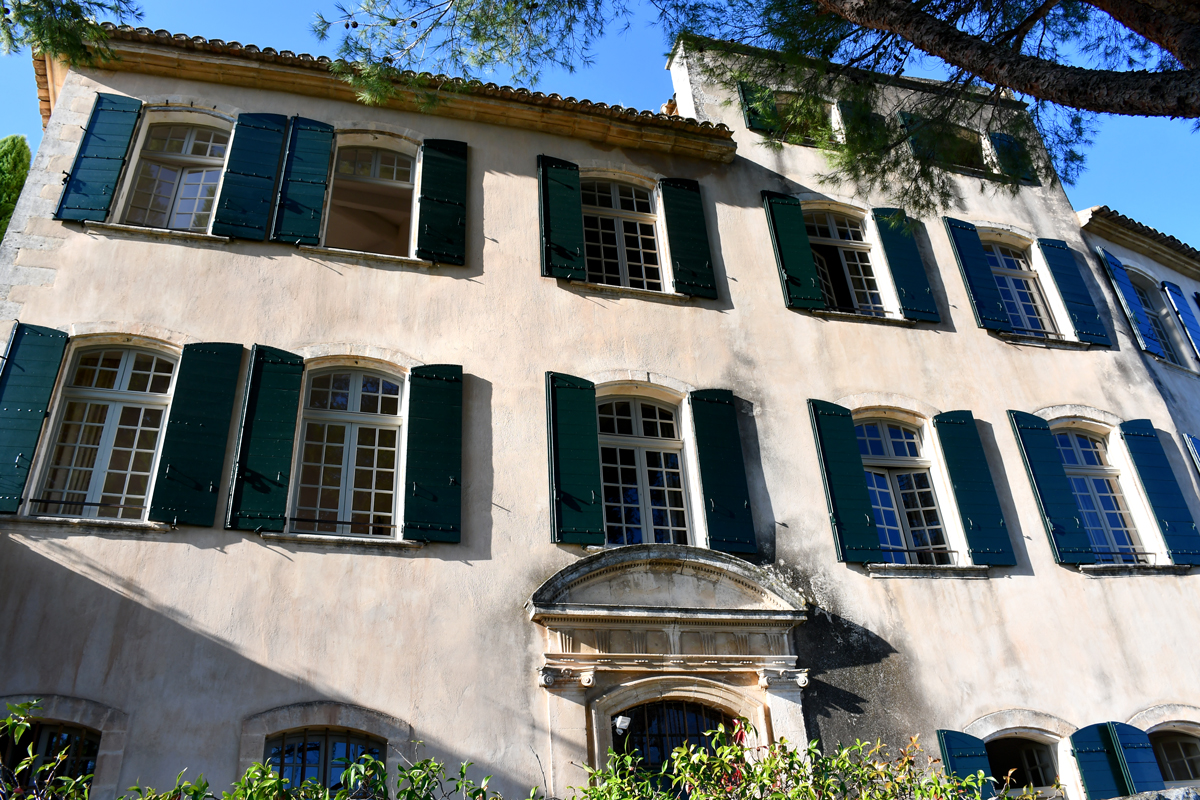
Maison Dora Maar © French Moments
In 1944, it found new life under the ownership of the surrealist artist and photographer Dora Maar, who played the dual role of companion and muse to Picasso from the late 1930s to the early 1940s. Following her parting with Picasso, Dora Maar sought solitude in Ménerbes every summer, crafting a life of introspection and creativity.

Maison Dora Maar © French Moments
Upon her passing in 1997, an American benefactor, Nancy Brown Negley, acquired and lovingly restored the house, transforming it into a haven for writers, artists, and scholars.
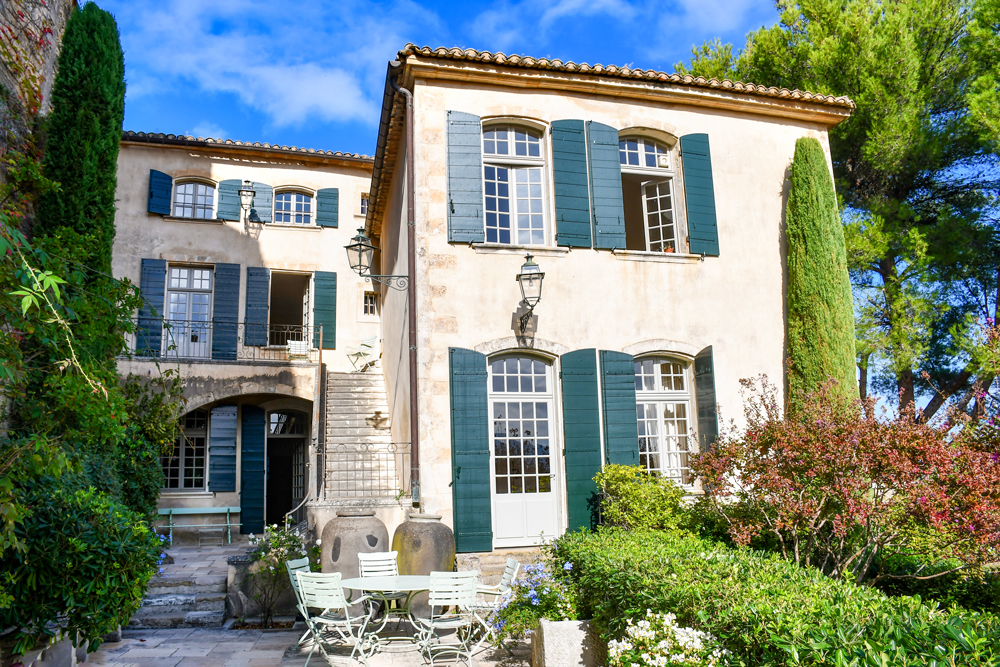
Maison Dora Maar © French Moments
Guided tours of the Maison Dora Maar are available (see the official website for details).
The Corkscrew Museum
At the foot of the village is the Corkscrew Museum with over 1,000 pieces.
Around the village
In the vicinity of Ménerbes are two interesting sites: the Pichouno dolmen and the Saint-Hilaire abbey.
The Pichouno dolmen
The Pichouno ("the little girl") dolmen was discovered in 1850 by a farmer who emptied it to store potatoes. It was then identified by Abbé André, the village priest, who studied it and reported it to the French Archaeological Society. It is the only dolmen in the Vaucluse.

Dolmen de la Pitchoune by Véronique PAGNIER (Public Domain via Wikimedia Commons)
The Saint-Hilaire abbey
Between Ménerbes and Lacoste, on the hillside and facing the Luberon, stands the Saint-Hilaire abbey. This is the first Carmelite conventual building (13th century) in the Comtat Venaissin.
![Saint Hilaire © Jean-Marc Rosier - licence [CC BY-SA 3.0] from Wikimedia Commons Saint Hilaire abbey © Jean-Marc Rosier - licence [CC BY-SA 3.0] from Wikimedia Commons](https://frenchmoments.eu/wp-content/uploads/2022/11/Saint-Hilaire-©-Jean-Marc-Rosier-licence-CC-BY-SA-3.0-from-Wikimedia-Commons-scaled.jpg)
Saint Hilaire abbey © Jean-Marc Rosier - licence [CC BY-SA 3.0] from Wikimedia Commons
The former Carmelite convent of Ménerbes, built on a steep slope facing the Luberon, has kept its medieval architectural unity (13th century) and its 17th century extension.

Cloister of Saint-Hilaire abbey. Photo: Véronique PAGNIER (Public Domain via Wikimedia Commons)
A community of hermits, refugees from Mount Carmel in Palestine during the Crusades, lived here for five centuries. The Carmelite friars provided religious life for the neighbouring inhabitants and laid out the terraces for cultivation.

Bell tower of Saint-Hilaire abbey. Photo: Véronique PAGNIER (Public Domain via Wikimedia Commons)
At the end of the 16th century, a large terrace was formed by the defensive wall and its tower to protect the site. Closed at the end of the 18th century, the convent was sold in 1793 to farmers who occupied the site for two centuries.
More photos of Ménerbes
Here are more photos of Ménerbes taken during our last visit.

The honey-coloured façade of the village © French Moments

Place Albert Roure © French Moments

A typical Provençal-style window! © French Moments

Doorway to the Maison Dora Maar © French Moments

The store "La vie est belle" © French Moments

Rue de la fontaine © French Moments

Old sign on the façade of a house © French Moments

In the centre of the village © French Moments
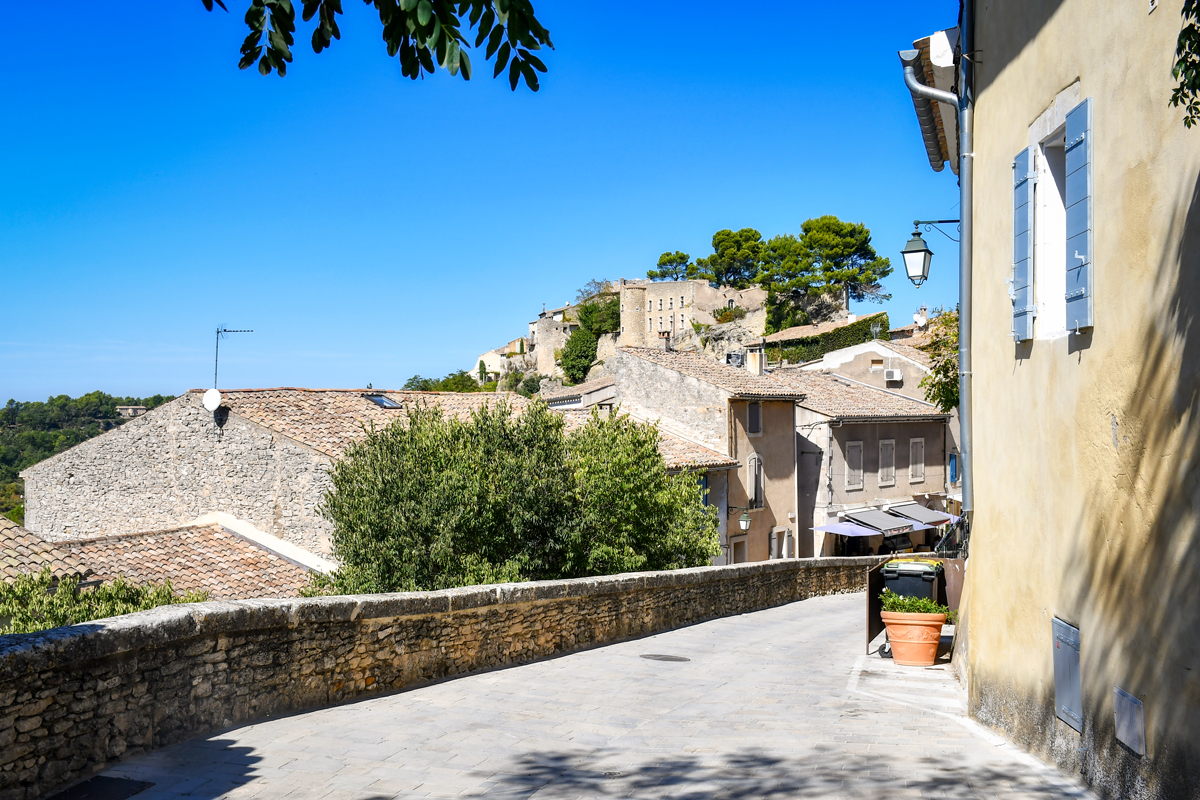
The citadel of Ménerbes

A stroll in the streets of Ménerbes

The Carmejane mansion © French Moments

The view from the village © French Moments
Find out more about Ménerbes
Holiday accommodation in Ménerbes
Ménerbes has a high capacity for holiday accommodation. The commune has several hotels, many bed and breakfasts (covering all price ranges), several estate agencies offering seasonal rentals, gîtes and a campsite.
Click here to book your accommodation in the Luberon or browse the map below:
Shops and restaurants in Ménerbes
Shops and amenities in Ménerbes:
Boulangerie Roche (bakery)
24, rue Kléber Guendon - Closed on Monday (except in July-August)
Epicerie du Luberon (grocery store)
36 Avenue Marcellin Poncet - Closed on Monday
Le Panier de Jade (grocery store)
16 Avenue Marcellin Poncet - Closed on Monday (except in July-August)
Pharmacie (pharmacy)
345 Route des écoles - Closed on Sunday
Agence postale (post office)
119 Avenue Marcellin Poncet - Open Monday to Friday
Bibliothèque municipale François Nourissier (Public library)
Route des écoles - Open Wednesday/Saturday: 10am to 12pm and Monday/Tuesday/Friday 4pm to 6pm - Access to the media library and consultation of documents on site are free. However, to borrow documents from home, you need a subscription.
Cafés and restaurants in Ménerbes:
Les Saveurs Gourmandes (restaurant)
51 Rue Kléber Guendon - website
Café du Progrès (restaurant)
31 Rue Raoul et R. Sylvestre - website
La Bastide de Marie (restaurant)
64 Chemin des Peirelles - website
Bistrot Le 5 (restaurant)
5 Place Albert Roure - website
Le Galoubet (restaurant)
104 Avenue Marcellin Poncet - website
L'escandihado (restaurant)
56 Avenue Marcellin Poncet - website
La Table de l'Épicier (restaurant)
16 Avenue Marcellin Poncet - facebook
Restaurant Maison de la Truffe & du Vin
Place de l'Horloge - website
The nearest supermarkets to Ménerbes:
Super U in Coustellet (8 km / 5 mi) - website
Lidl in Cavaillon (16 km / 10 mi) - website
Auchan in Cavaillon (15 km / 9.5 mi) - website
On the blog and other websites
Here are some pages from our blog and other websites to find out more about this Provencal destination.
- Discover the hilltop villages of the Luberon
- Find out more about Provence-Alpes-Côte d'Azur
- The official tourist office of the area
- Check out the Tourist Information board of Luberon-Pays d'Apt

Direction Ménerbes © French Moments
What to do in the Luberon
Be inspired by a list of things to do in the Luberon:
Pin Ménerbes on Pinterest


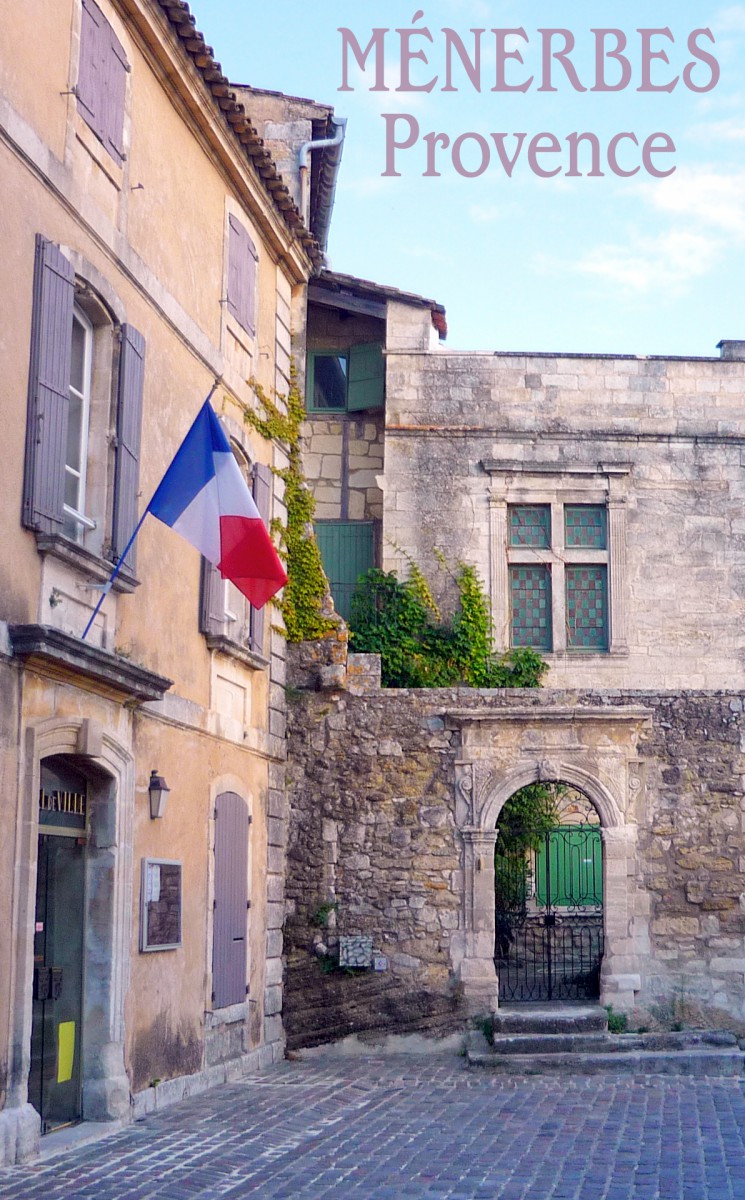




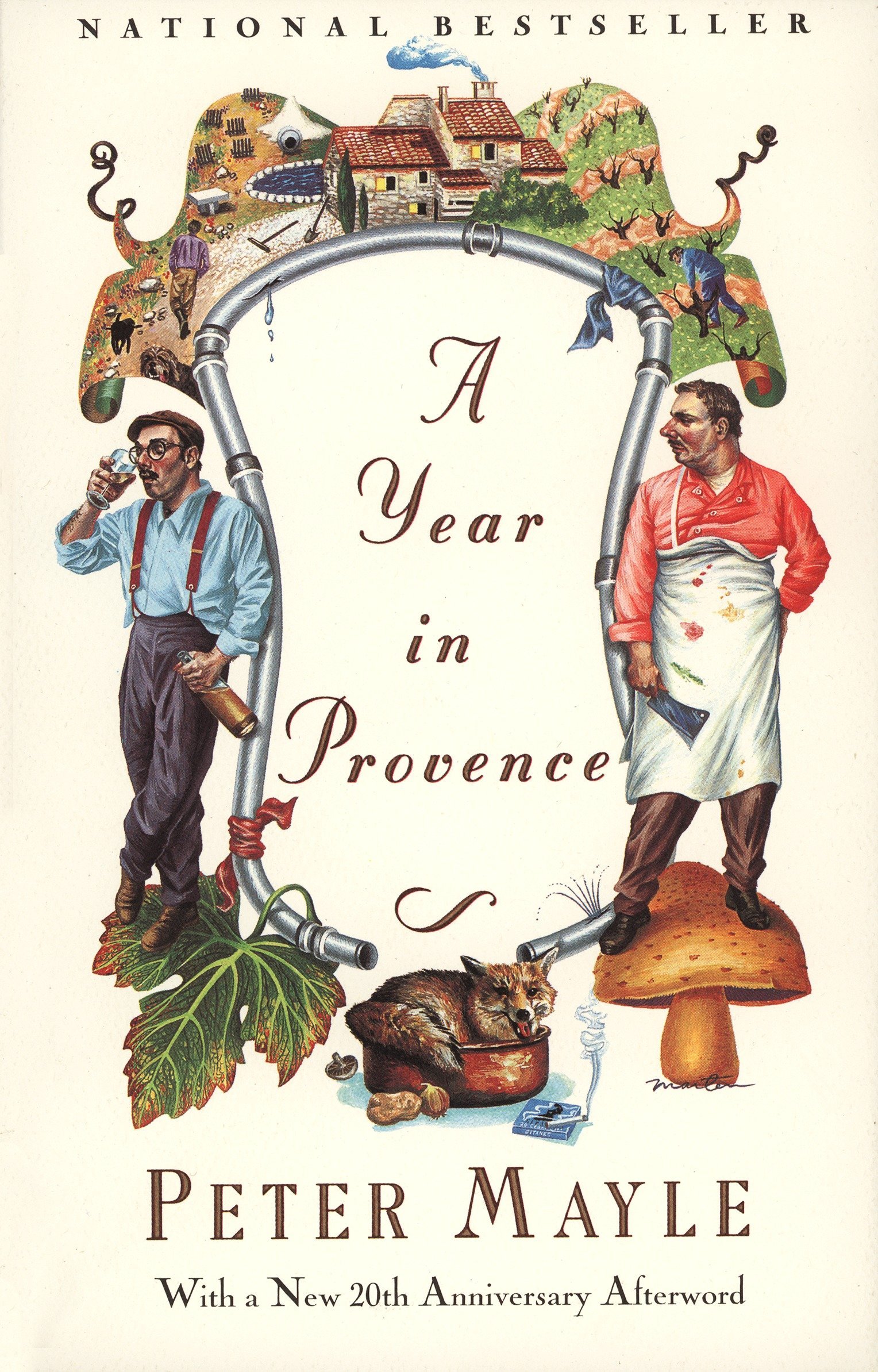



Pierre, I devoured all of Peter Mayle's books and had a dream for many years to visit the Lubéron which I was finally able to do last year. Your photos of Ménerbes brought back wonderful memories of the region. I hope to be able to go back one day, but in the meantime your articles help me experience it from my living room – merci!
Thank you Ellen, it’s such a beautiful place indeed… I can’t wait to see it again too 🙂